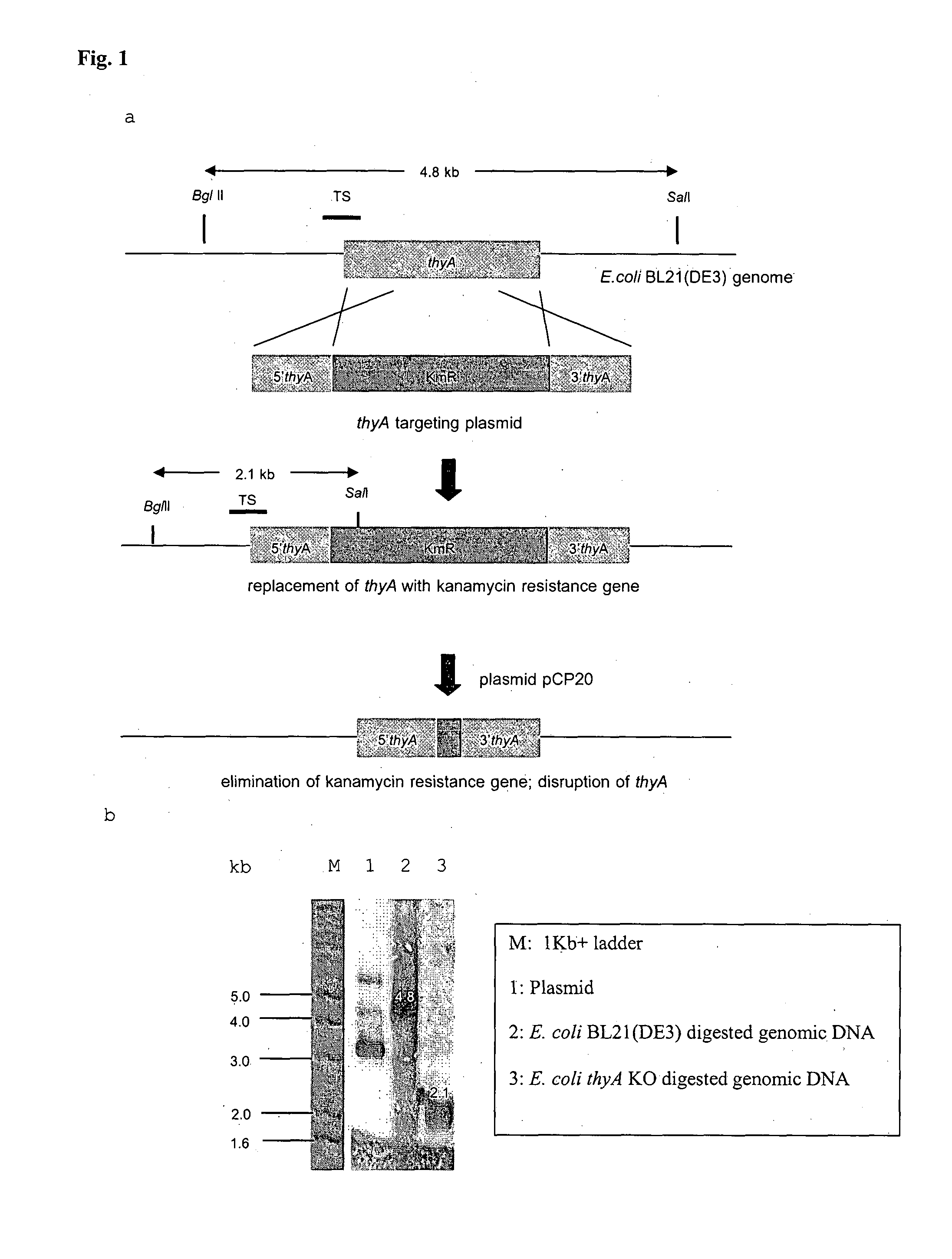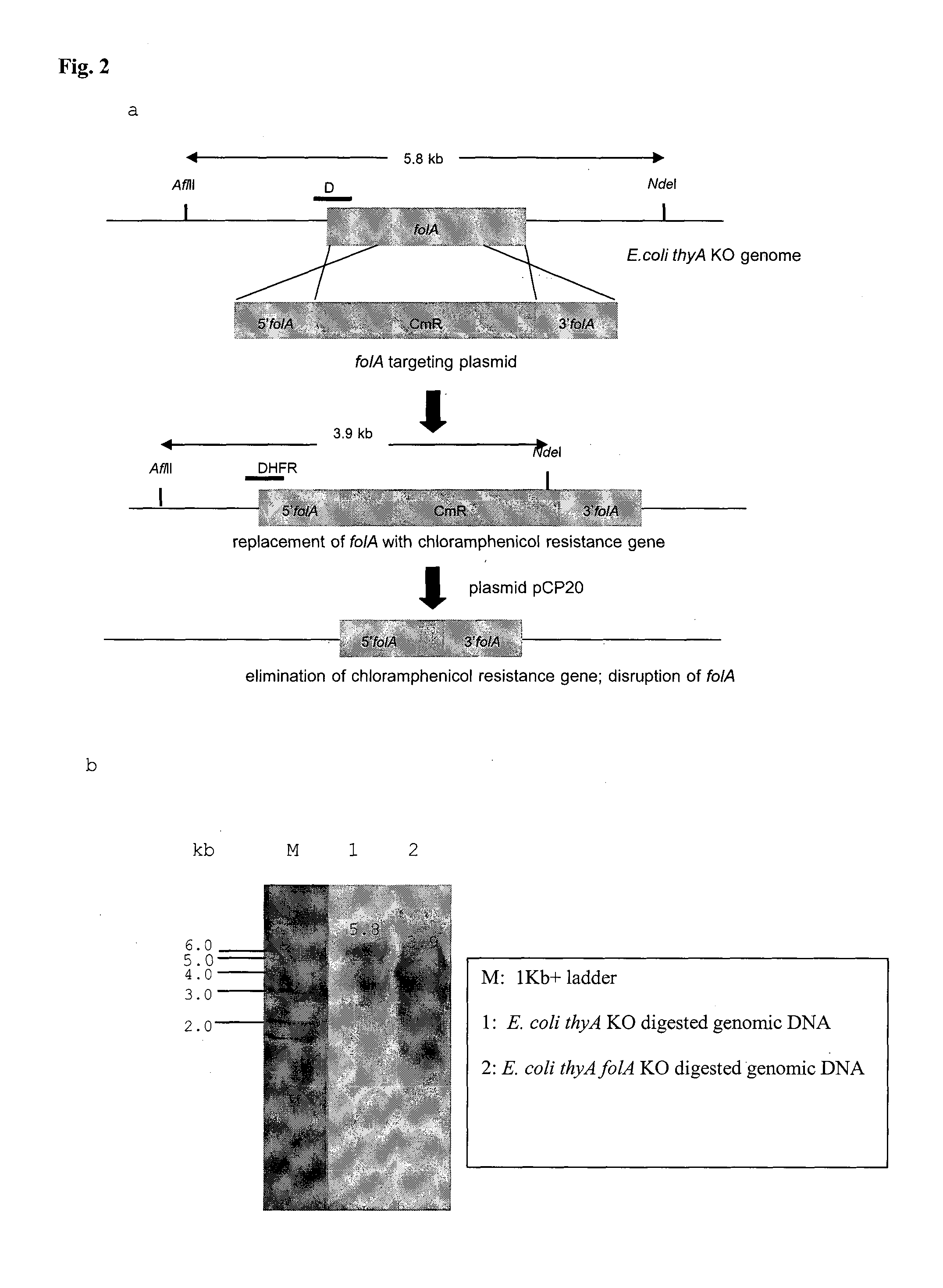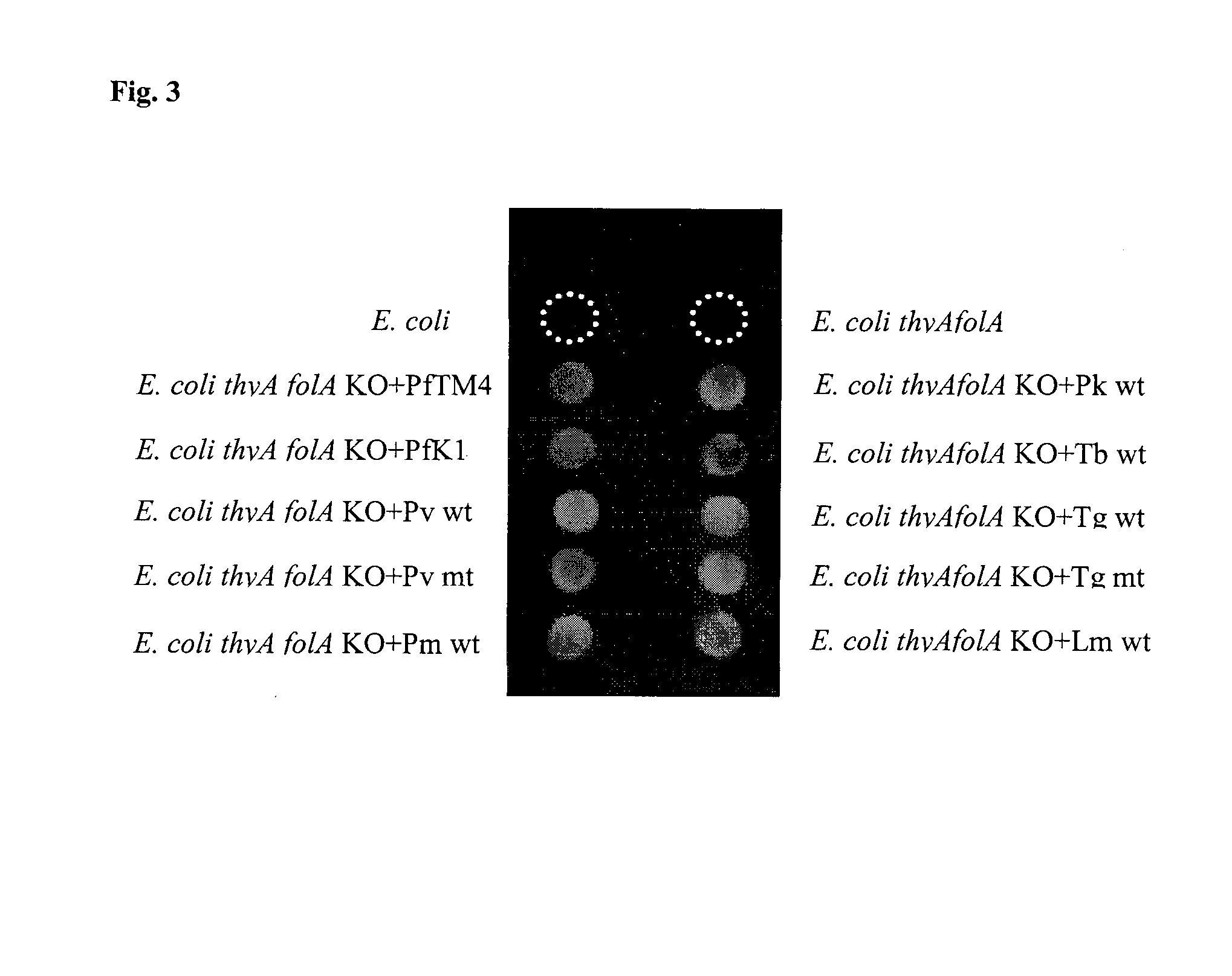BACTERIAL SURROGATE FOR TESTING OF ANTIMALARIALS: thyA KNOCKOUT AND folA KNOCKOUT BACTERIA FOR TESTING OF INHIBITION OF MALARIAL DIHYDROFOLATE REDUCTASE-THYMIDYLATE SYNTHASE
a technology of reductase and thymolylate, which is applied in the field of bacteria surrogate for testing of antimalarials, can solve the problems of limiting anti-malarial screening and the correlation between anti-malarial drug efficacy evaluated by these methods and conventional anti-malarial screening methods that employ cultured parasites
Active Publication Date: 2014-10-02
NAT SCI & TECH DEV AGENCY
View PDF1 Cites 2 Cited by
- Summary
- Abstract
- Description
- Claims
- Application Information
AI Technical Summary
Benefits of technology
The patent text describes a method for creating a bacterial model suitable for antifolate screening. This involves disrupting the genes responsible for the production of thymidylate synthase and dihydrofolate reductase in E. coli BL21(DE3) using plasmid-based techniques. The resulting bacteria lack these enzymes and can only grow when complemented with the genes from malaria or non-malaria parasites. The transformed cells can be used to screen for antifolate drugs, which are used to treat malaria and other parasitic infections. The method provides a reliable and efficient way to screen for these drugs.
Problems solved by technology
These requirements are a hindrance to high throughput screening and limit anti-malarial screening to centers with malaria culture systems in place.
However, anti-malarial drug efficacy evaluated by these methods correlates poorly with conventional anti-malarial screening methods that employ cultured parasites.
This may largely be due to off-target interference by trimethoprim and the poor growth rate of PA414, respectively.
Method used
the structure of the environmentally friendly knitted fabric provided by the present invention; figure 2 Flow chart of the yarn wrapping machine for environmentally friendly knitted fabrics and storage devices; image 3 Is the parameter map of the yarn covering machine
View moreImage
Smart Image Click on the blue labels to locate them in the text.
Smart ImageViewing Examples
Examples
Experimental program
Comparison scheme
Effect test
Embodiment Construction
[0052]As described above in disclosure of invention section.
INDUSTRIAL APPLICABILITY
[0053]As described above in disclosure of invention section.
the structure of the environmentally friendly knitted fabric provided by the present invention; figure 2 Flow chart of the yarn wrapping machine for environmentally friendly knitted fabrics and storage devices; image 3 Is the parameter map of the yarn covering machine
Login to View More PUM
| Property | Measurement | Unit |
|---|---|---|
| antibiotic resistance | aaaaa | aaaaa |
| resistance | aaaaa | aaaaa |
| antifolate resistance | aaaaa | aaaaa |
Login to View More
Abstract
The objective of this invention is to create a double thyA folA knockout Escherichia coli (E. coli) strain for antifolate screening against DHFR of malaria and other parasites. This strain is used together with a plasmid expressing DHFR-TS from the desired pathogenic organism, which constitutes an anti-DHFR assay against the pathogenic organism of interest. The benefit of this invention is that there is no interference from either host DHFR or trimethoprim, a bacterial DHFR inhibitor. This tool is easy to use and maintain. It provides quick and reliable results as compared with conventional anti-malarial and anti-parasitic assays. This invention should facilitate discovery of new anti-DHFR compounds against malaria and other parasitic diseases.
Description
TECHNICAL FIELD[0001]Biotechnology with genetic engineering in bacteria and dihydrofolate reductase-thymidylate synthase enzyme inhibition assayBACKGROUND ART[0002]Malaria is an infectious disease caused by Plasmodium parasites. There are 5 species which infect humans:[0003]1. Plasmodium falciparum (the most virulent)[0004]2. Plasmodium vivax [0005]3. Plasmodium malariae [0006]4. Plasmodium ovale [0007]5. Plasmodium knowlesi (primarily infect monkeys but also humans)[0008]P. falciparum, P. malariae and P. knowlesi can invade and grow in young and old red blood cells, but P. vivax and P. ovale can only invade young red cells (reticulocytes). P. falciparum and P. vivax are the most abundant forms in Thailand. Female Anopheles dirus and Anopheles minimus are the major mosquito species that transmit malaria in Thailand.[0009]Throughout malaria endemic areas of the World, malaria parasites have developed resistance to most available anti-malarial drugs. There is thus an urgent need for n...
Claims
the structure of the environmentally friendly knitted fabric provided by the present invention; figure 2 Flow chart of the yarn wrapping machine for environmentally friendly knitted fabrics and storage devices; image 3 Is the parameter map of the yarn covering machine
Login to View More Application Information
Patent Timeline
 Login to View More
Login to View More Patent Type & Authority Applications(United States)
IPC IPC(8): C12Q1/26
CPCC12Q1/26C12N9/003C12N9/1007C12N15/70C12Y201/01045Y02A50/30
Inventor SUWANAKITTI, NATTIDAGHAOTHEING, SASTRAYUTHAVONG, YONGYUTHKAMCHONWONGPAISAN, SUMALEE
Owner NAT SCI & TECH DEV AGENCY
Features
- R&D
- Intellectual Property
- Life Sciences
- Materials
- Tech Scout
Why Patsnap Eureka
- Unparalleled Data Quality
- Higher Quality Content
- 60% Fewer Hallucinations
Social media
Patsnap Eureka Blog
Learn More Browse by: Latest US Patents, China's latest patents, Technical Efficacy Thesaurus, Application Domain, Technology Topic, Popular Technical Reports.
© 2025 PatSnap. All rights reserved.Legal|Privacy policy|Modern Slavery Act Transparency Statement|Sitemap|About US| Contact US: help@patsnap.com



